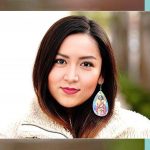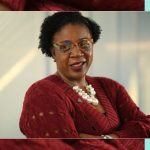Allie Young
Activist
-
Born to Lead

She’s calling “action” on activism.
Allie Young is the founder of Protect the Sacred, an organization supporting and empowering the next generation of Native American leaders and storytellers. This year, she’s tackled a lot, like fighting against Covid misinformation and dismantling the stereotypes Hollywood still won’t quit.
We spoke with the New Mexico local about launching a career in community work, how she got an Avenger to aid her cause, and why teens could be the key to solving age-old problems.
What’s Protect the Sacred?
It’s a program at Harness—a nonprofit founded by America Ferrera, Wilmer Valderrama, and Ryan Piers Williams that works at the intersection of social justice and entertainment. Protect the Sacred started as a Covid response. I used to work at Indian Health Service in Shiprock, New Mexico, and my former colleagues—who are physicians and public health professionals—called and said, “Hey, it’s not looking pretty here. We think we’re heading into something very dangerous for the Nation.” This was right before we got hit. I said, “Okay, how can I help?” The work was getting out correct info from the CDC and combating misinformation.
Entire governments have struggled with Covid communication. How did you approach it?
In the Navajo Nation, we still have a lot of fluent language speakers. Many of them are our elders, so that was our number one concern because they’re the most vulnerable. We wanted to make sure they understood what was being said on the news. That meant communicating with our Diné youth to come up with messaging. That’s really when Protect the Sacred launched. I called on my friend Mark Ruffalo—
Thee Mark Ruffalo?
Yeah, and I said, “It’d be great if we could do a Facebook Live with Native youth, because they look up to you as the Hulk.” Indian country loves Mark Ruffalo [laughing]. We set up a Facebook Live and that led to another, where he pulled in Paul Rudd and Taika Waititi. Then we made some PSAs with other celebrities and brought the spotlight to the Navajo Nation and how it was the hardest-hit community at the time. We called for medical volunteers and PPE essential supplies. That work still exists, but now we’re in a phase of vaccines.
Has that affected your strategy?
We’re working closely with IllumiNative, another Native nonprofit, as one of the grantees of their For the Love of Our People campaign. We’re working on getting the vaccination rate in Navajo Nation up, which is already [around 70%]. Then there’s the work of making sure the narrative isn’t about “poor Navajo Nation” but about our resilience—how we went from hardest-hit to having herd immunity. We did that by coming together and leaning into our culture.
What initiatives have you taken outside of Covid?
In September, we had our inaugural Native Youth Summit where we brought together 140 Native youth through Zoom to hear from leaders across Indian country. We had panels with Taboo from the Black Eyed Peas and amazing actors from great Native content that’s been coming out, like Rutherford Falls and Reservation Dogs. We even had Vice President Kamala Harris send a video encouraging everyone to stay civically engaged and protect the sacred with their votes.
Why did you choose to focus on minors for Protect the Sacred’s next step?
Native American youth has always been at the core of everything I do. After graduating college, I co-founded an art and media festival called Survival of the First Voices. It gave Native youths in the Four Corners region of the Southwestern tribes a space to learn from prominent artists within Indian country—from hip hop artists to culinary artists to musicians who were making a career out of their passions… I’ve worked at the Paramount Studios lot and for Native Americans in Philanthropy, but throughout everything, I’ve always been passionate about empowering Native youth.
When did that become your personal mission?
As a child, I didn’t see a lot of positive examples of my people in mainstream media, and it affected the way I thought about myself. In elementary and middle school, I remember wishing I weren’t Native so I could fit in. I know that had an impact on my family as well, my little brother included. He committed suicide when he was 17 and I was 18. That’s when I became so invested in providing programs for Native youth. I feel that if my brother had something to turn to like Protect the Sacred or Survival of the First Voices, maybe he’d still be here.



